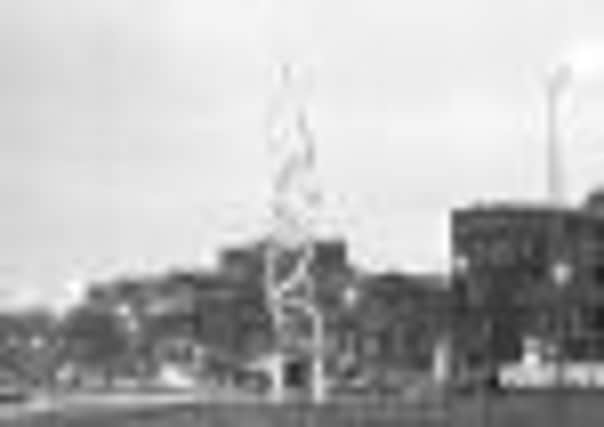Lost Edinburgh: The Kinetic Sculpture
This article contains affiliate links. We may earn a small commission on items purchased through this article, but that does not affect our editorial judgement.


Designed by Roger Dainton, the structure stood on the present site of Picardy roundabout from 1973 to 1983. Its helix-shaped steel frame was fitted with 96 fluorescent light tubes that were engineered to rapidly change pattern according to the direction and intensity of the wind. An anemometer, wind vane and dimmer switch were integrated to help create a spectacular feast of light that promised to produce over a million colourful combinations. At least that was the idea – the Picardy kinetic light sculpture rarely worked as intended. As the 1970s wore on, unimpressed Edinburgh residents devised a number of unflattering monikers to describe the kinetic sculpture, such as “the wonky pylon” and “the monument to a drunken scaffolder”.
The project appeared doomed for failure from the outset. As a result of energy restrictions sparked by the global oil crisis and domestic coal shortage, the kinetic sculpture was limited to just a 60-second opening display. A permanent switch on of its neon flashing lights was delayed by 4 months due to the severe power restrictions which were choking the nation at the time. The sculpture was viewed by some as an innovative work of art, while others deemed the £11,000 cost of building it as an obscene waste of money in an era of enforced austerity. When the power restrictions were eventually lifted, the sculpture began to attract fierce criticism. A torrent of technical issues meant that the kinetic structure consistently failed to produce the light show that its benefactors, the Scottish Arts Council and Edinburgh Corporation, had imagined. The campaign for its removal gathered steam. By 1983 – just 10 years after the sculpture’s inception, it was gone. The neon tower was disassembled and consigned to a council storage facility. It is said to have since been sold on, however, its current location is something of a grey area.
Advertisement
Hide AdAdvertisement
Hide AdDespite a similar kinetic monument at the Hayward Gallery in London achieving something of a cult status, the Picardy roundabout incarnation fails to spark fond recollections. Perhaps Edinburgh just wasn’t ready. One wonders what the city would make of such a sculpture today.
• David McLean is the founder of Lost Edinburgh, a site dedicated to documenting the capital’s ever-changing landscape over the years. For more on Lost Edinburgh, visit the Facebook page.